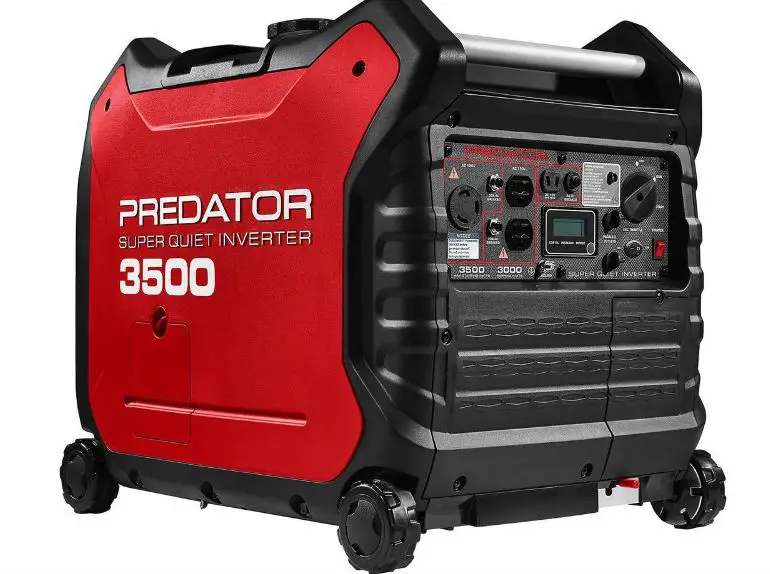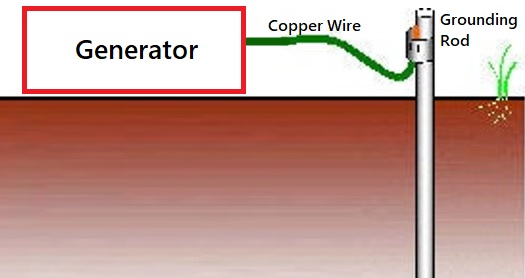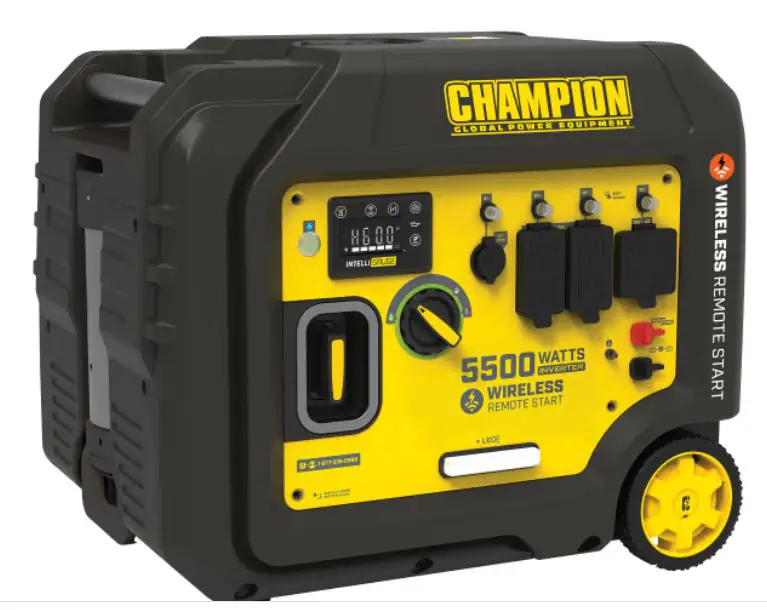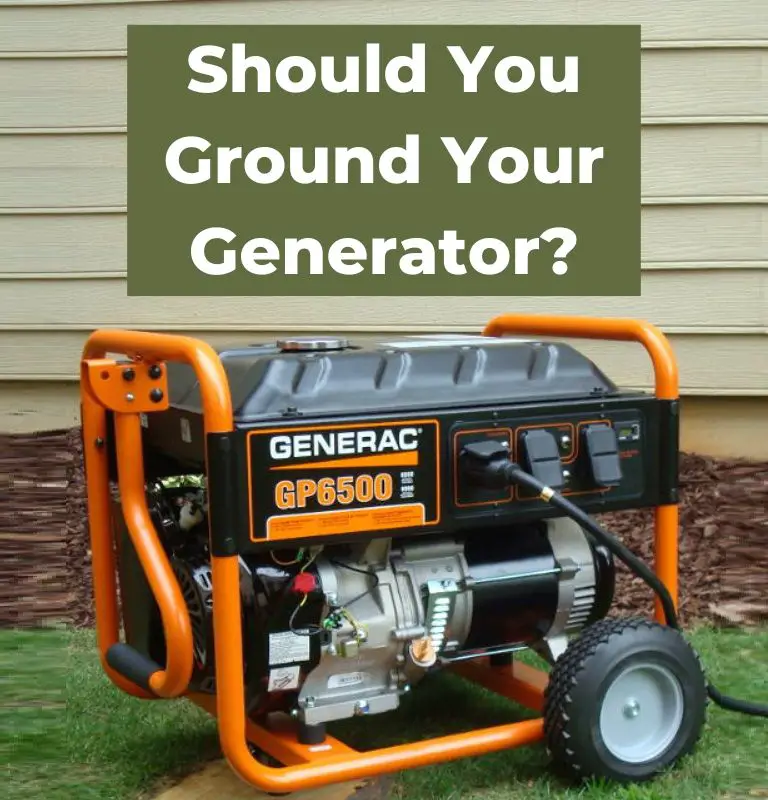When camping, a generator can be a useful tool to provide power for various devices. However, there are important safety considerations to keep in mind when using a generator, including whether or not to ground it. While some people may assume that grounding a generator is unnecessary, it is actually an important safety measure that can help prevent electrical shocks and other hazards.
Grounding a generator involves connecting it to the earth using a copper rod and wire. This helps to dissipate any excess electrical energy and prevent it from building up and potentially causing harm. While some generators may have a built-in grounding feature, it is important to verify this and follow proper grounding procedures to ensure safety. In this article, we will explore the reasons why grounding a generator is important when camping, as well as provide tips and guidelines for how to properly ground a generator.
Why You Should Ground Your Generator

Grounding your generator is an important safety measure that should not be ignored. It helps protect you, your family, and your equipment from electrical shock and damage. Here are a few reasons why you should ground your generator:
Compliance with Electrical Codes
Electrical codes require generators to be grounded to mitigate the risk of electrical shock. If your generator is not grounded, you are at risk of electrocution and damage to your connected appliances. By grounding your generator, you are complying with electrical codes and ensuring your safety.
Protection of Electrical System
Grounding your generator also protects your electrical system from damage. When a generator is not grounded, it can create electrical surges that can damage your appliances and electrical circuit. Grounding your generator helps prevent electrical surges and keeps your electrical system safe.
Use of Metallic Frame
Most generators have a metallic frame that acts as a ground. When the generator is properly grounded, it ensures that the frame is at the same potential as the earth. This reduces the risk of electrical shock and protects you from harm.
Protection Against Electrical Shock
Grounding your generator helps protect you and your family from electrical shock. If there is a fault in your electrical system, the ground wire provides a path for the electricity to flow safely to the earth. This reduces the risk of electrical shock and keeps you safe.
Compliance with Manufacturer’s Instructions
It is always important to follow the manufacturer’s instructions when it comes to grounding your generator. Some generators are pre-grounded to the metal frame, while others need to be grounded with a buried ground rod. By following the manufacturer’s instructions, you can ensure that your generator is properly grounded and that you are safe from harm.
In conclusion, grounding your generator is an essential safety measure that should not be ignored. It helps protect you, your family, and your equipment from electrical shock and damage. By complying with electrical codes, protecting your electrical system, using the metallic frame, and following the manufacturer’s instructions, you can ensure that your generator is properly grounded and that you are safe from harm.
See Related: Where Is The Power Converter In My RV?
What Happens If You Don’t Ground A Generator?

So do you have to ground a generator? What’s the big deal? If you don’t ground a generator, it can have disastrous effects that might harm your electrical equipment, start a fire, and even pose a risk of electrocution.
The machine will overheat, resulting in long-term damage. Grounding your generator makes sure that in case of any malfunction, the extra current has a path to safely go away and the generator doesn’t use the body of the person touching it as a pathway instead.
How to Ground a Generator

When camping with a generator (especially off-grid camping), it is important to properly ground it to prevent electrical shocks or fires. Here are the steps to follow:
Read Your Generator Manual First
Before grounding your generator, read the owner’s manual to determine if grounding is necessary and to follow any specific instructions from the manufacturer.
Step 1: Connect the Ground Wire
Locate the ground wire on your generator and connect it to the grounding electrode using a grounding bolt. Make sure the connection is tight.
Step 2: Choose the Right Grounding Electrode (Copper Rod)
Choose a copper rod that is at least 4 feet long and drive it into the ground near the generator. Make sure to choose a location that is not near any fuel tanks or other flammable materials.
Step 3: Secure the Grounding Rod
Make sure the grounding rod is securely in the ground and not loose. Use a mallet or hammer to drive it into the ground if necessary.
Step 4: Connect the Generator to the Grounding Rod Using Copper Wire
Using a copper wire, connect the generator’s ground wire to the grounding rod. Make sure the connection is tight and secure.
When grounding a portable generator, it is important to take extra precautions when camping. Make sure the ground is dry and sheltered from moisture, and use only copper wire and a metal rod for grounding.
If using an extension cord, make sure it is rated for outdoor use and is in good condition. If using a transfer switch, make sure it is properly installed and grounded.
Following these steps will help ensure a safe and effective grounding of your generator when camping.
See Related: How to Make a Generator Quiet & How To Mount A Generator On A Camper Trailer
Tools Needed to Ground Your Generator
When camping, it’s important to ground your generator to prevent electrical shock and damage to your equipment. Here are the tools you’ll need to ground your generator:
1. Copper Rod
A copper rod is the main component of your grounding system. It should be at least 4 feet long and made of solid copper. A longer copper rod may help penetrate the ground for a more sturdy grounding.
2. Solid Copper Wire
A solid copper wire is used to connect the copper rod to the generator. The wire should be at least 6-gauge and long enough to reach from the generator to the grounding rod.
3. Ground Clamp
A ground clamp is used to connect the copper wire to the generator. Make sure the clamp is securely attached to the grounding pin of the generator.
4. Wire Strippers
Wire strippers are used to remove the insulation from the copper wire. Make sure to use the correct size wire stripper for your wire gauge.
5. Mallet
A mallet is used to drive the copper rod into the ground. Make sure to use a sturdy mallet that won’t break under pressure.
6. Tools for Connecting Ground Wire
You’ll need pliers and a wrench to connect the ground wire to the grounding rod and generator.
It’s important to have all the necessary tools before attempting to ground your generator. Failure to properly ground your generator can result in serious injury or damage to your equipment.
Floating Neutral Vs Bonded Neutral Generators

When it comes to generators, there are two types of neutral systems: floating neutral and bonded neutral. The main difference between these two systems is the way the neutral wire is connected to the generator’s frame.
In a bonded neutral generator, the neutral wire is connected to the generator’s frame, which is then connected to the ground. This system provides a low-impedance path for current to flow in the event of a fault, which can help prevent electrical shock and damage to the generator.
On the other hand, in a floating neutral generator, the neutral wire is not connected to the generator’s frame. Instead, the ground must be provided by the home panel. The transfer switch, in this case, does not transfer the neutral to comply with the NEC standards.
It’s important to note that both types of systems can be safe and effective when used properly. However, it’s crucial to understand which type of system your generator has and how to properly ground it.
When camping, it’s important to make sure your generator is properly grounded. This can help prevent electrical shock and damage to your equipment. To ground your generator, you’ll need to use a grounding rod.
To ground a bonded neutral generator, you’ll need to connect the grounding rod to the generator’s grounding lug. For a floating neutral generator, you’ll need to connect the grounding rod to the home panel.
Overall, understanding the difference between floating neutral and bonded neutral generators can help you choose the right generator for your needs and ensure that it’s properly grounded for safe use while camping.
See Related: How Many Amps Does An Instant Pot Need?

